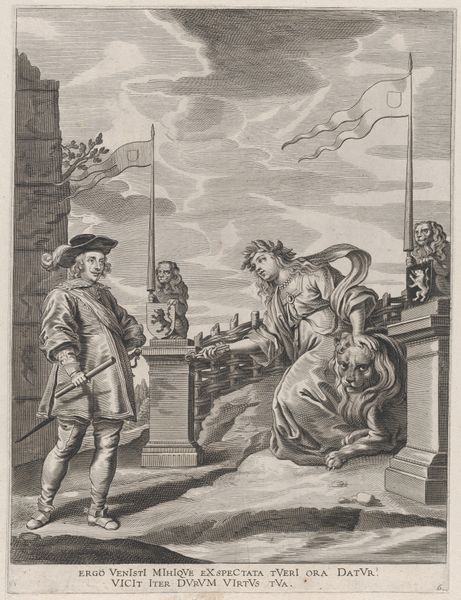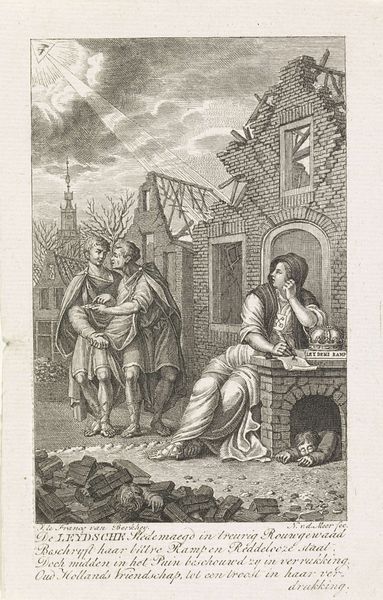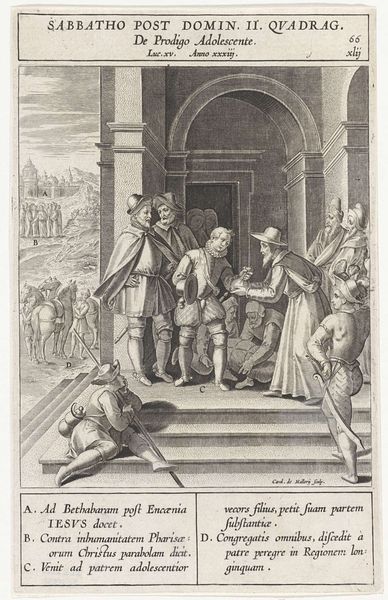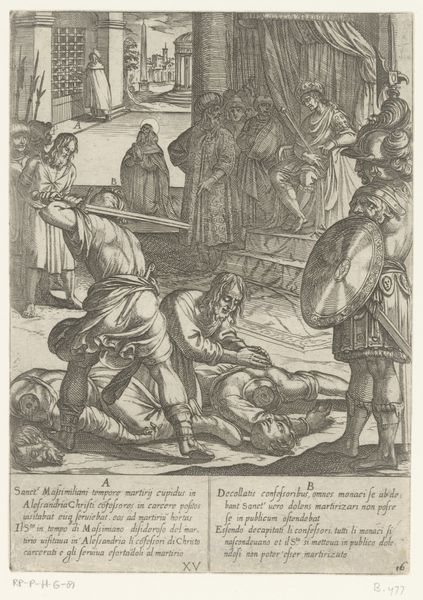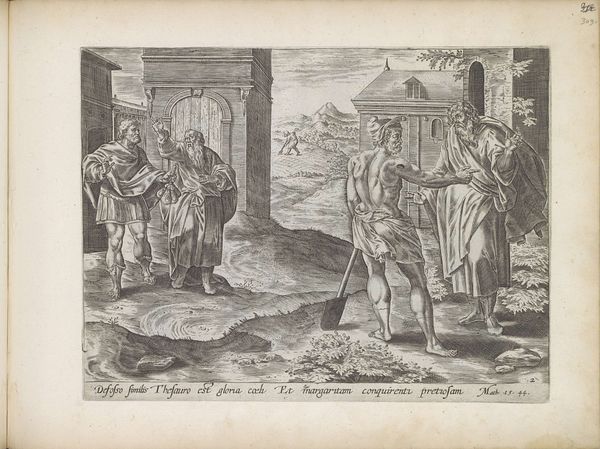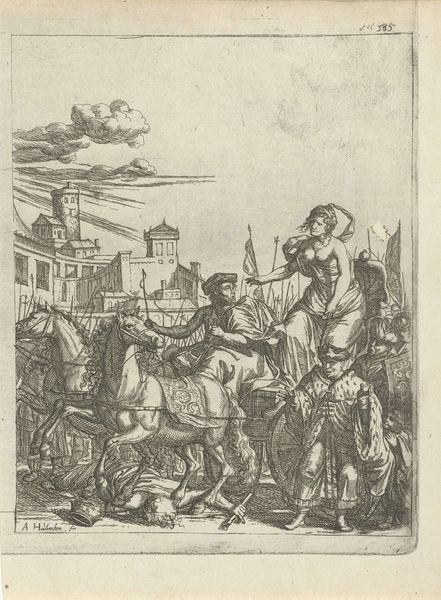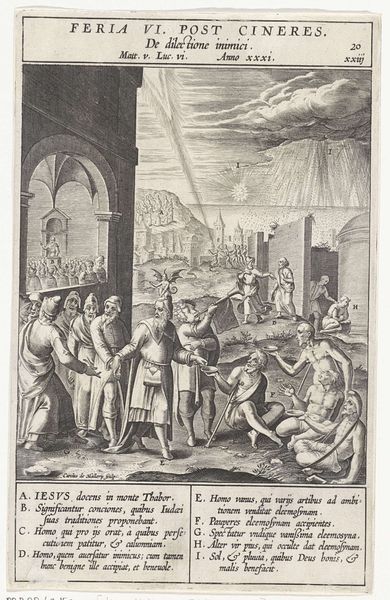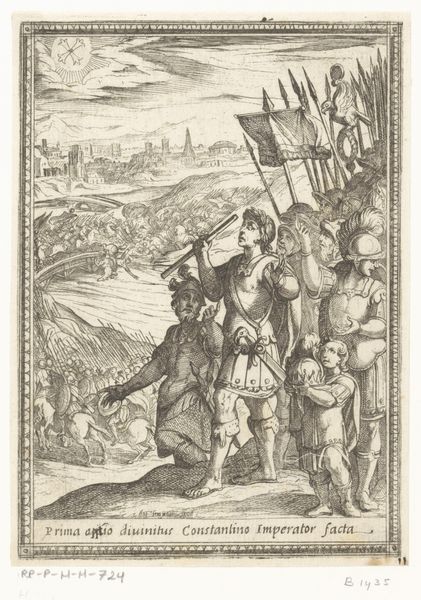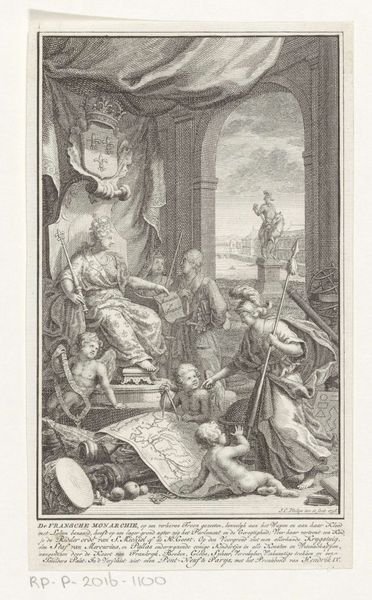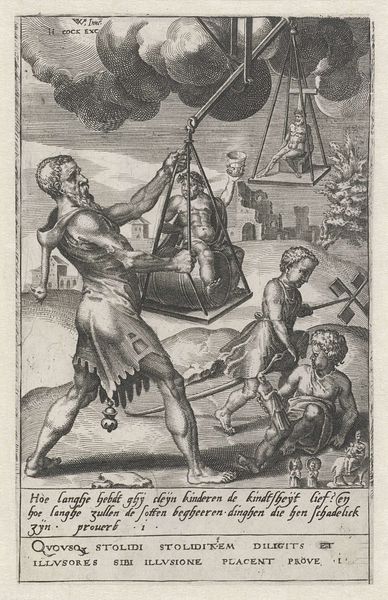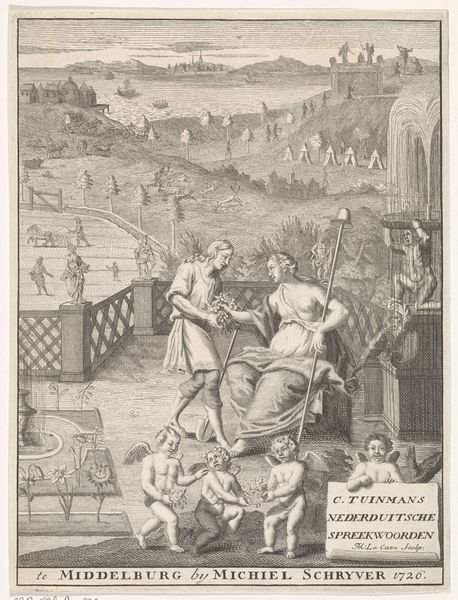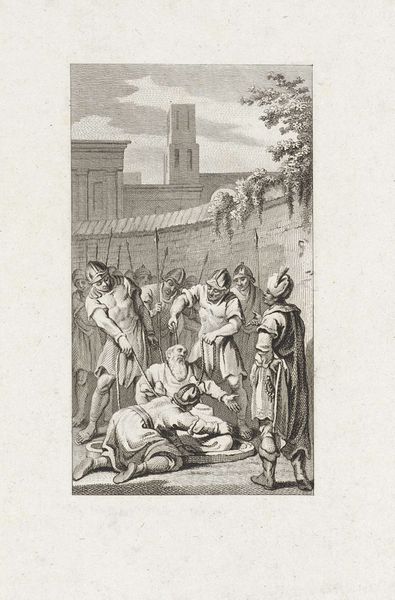
print, etching, engraving
#
narrative-art
#
baroque
# print
#
etching
#
history-painting
#
engraving
Dimensions: height 230 mm, width 181 mm
Copyright: Rijks Museum: Open Domain
Curator: Today, we're looking at "Narbal Taking Leave of Telemachus," an etching and engraving by Philip van Gunst from 1734. It resides here at the Rijksmuseum and tells a tale of departure and escape. Editor: It’s incredibly detailed, almost chaotic. My eyes bounce all over trying to figure out the focal point. Is it the boat? Is it the embrace? It feels very theatrical, a grand, swirling moment captured. I feel overwhelmed. Curator: That sensation of grand drama is quite intentional. The work belongs to the Baroque style, which emphasizes precisely those swirling emotions and dynamic compositions to connect with the viewer. The subject comes from narrative art and history-painting traditions. Editor: Right, that embrace. There’s an urgency to it, isn't there? But the body language is so stiff. Are they friends, or just… acquaintances making a polite farewell? It feels very performative, like they’re acting for an audience. And look at the little cherub on the boat's decor... that's strange to see amidst such serious gestures. Curator: The "performance," as you say, underscores its connection to courtly audiences, as it presents virtues appropriate for social standing, like brotherhood, honor, trust and statesmanship. Narrative pieces like this were commissioned for aristocratic audiences. See how Telemachus departs by Narbal, as mentioned in the text below, to leave Pigmalion. This piece isn't just showing the act of friendship, it highlights diplomatic relations, important allegiances that served a grander purpose. Editor: So, it's staged intimacy, more about the ideal than the real, that's disappointing somehow. Yet I still find myself drawn into the small dramas playing out, the guy struggling with what seems like a giant bag and a city on the far horizon ready for an adventure! Curator: Exactly. Van Gunst used engravings as an opportunity to provide not just aesthetic beauty but also underscore messages of morality and historical context in an easily reproducible form. Editor: It is easy to forget just how impactful a detailed etching like this would be before mass media. Thinking of it as a little newsreel that aristocrats passed around definitely shifts the perspective. I now appreciate it better, as the perfect, little political package. Curator: Indeed, understanding the societal function offers a new avenue of thinking about how to perceive not just this work, but all art. Thank you for providing such an honest perspective!
Comments
No comments
Be the first to comment and join the conversation on the ultimate creative platform.
